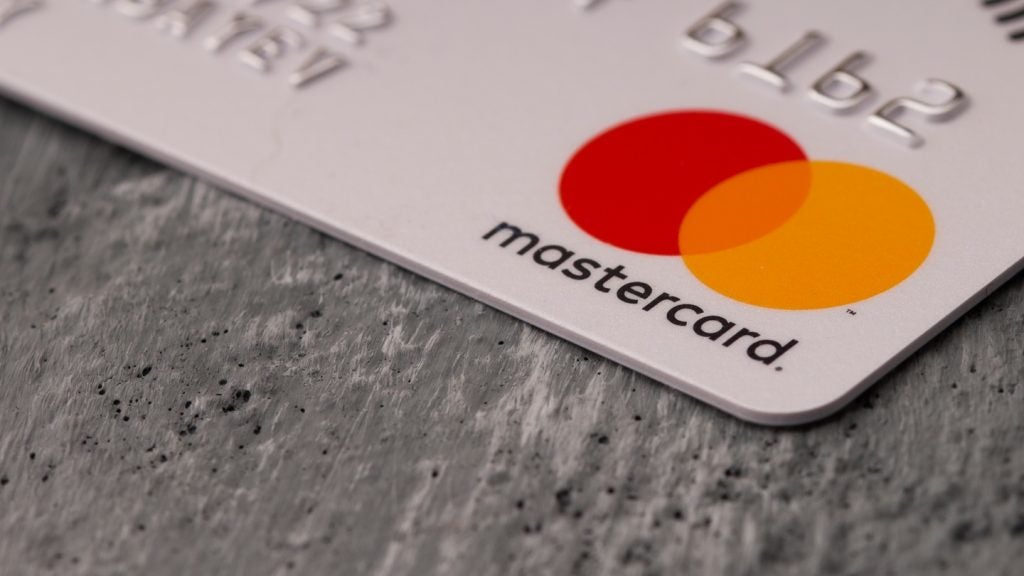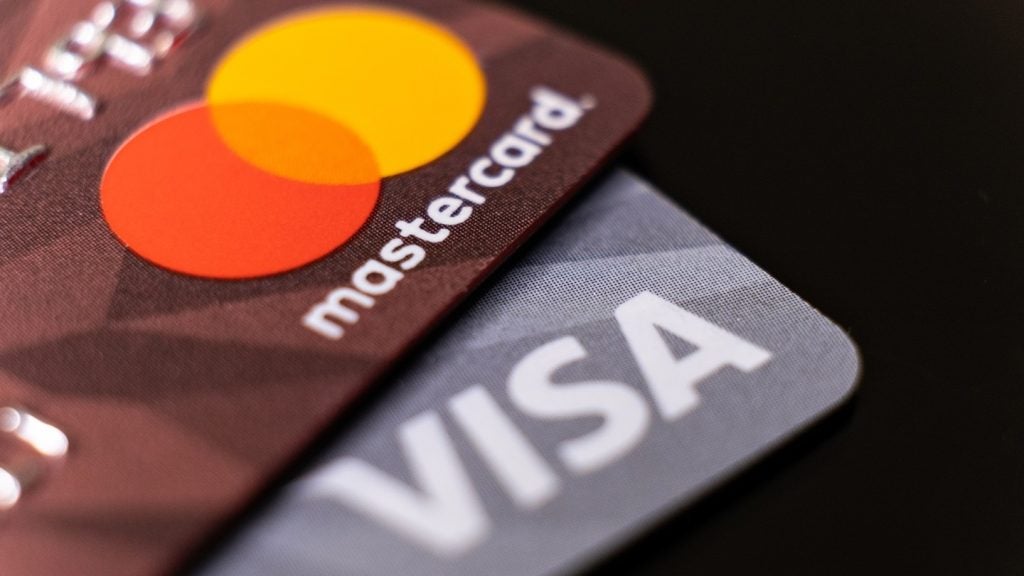Electronic payment in China has come
of age over the past decade, with huge strides made in the large
value and retail payments sectors. Much credit goes to China
UnionPay which has revolutionised inter-bank payments and
facilitated a spectacular increase in the use of cards in the
consumer market.

Access deeper industry intelligence
Experience unmatched clarity with a single platform that combines unique data, AI, and human expertise.
China’s economic growth – sparked by
economic reforms initiated two years after the death of Communist
Party leader Mao Zedong in 1976 – has astounded the world.
The US-based Foreign Policy Research Institute
notes that China’s economy is 10 times larger today than it was in
1978. In the process, China has risen from being the world’s
11th-largest economy in 1980 to become the third-largest in 2008,
lagging just behind the US and Japan .
Despite its impressive economic showing, China
in many respects remains a developing economy and one in which
building an electronic payments system is still a work in
progress.
Work on building China’s electronic payments
infrastructure began in 1991 under an initiative driven by
development organisation the World Bank with the establishment of a
group comprising the central banks of Germany, Japan, Switzerland,
the US and the UK to advise China’s central bank, the People’s Bank
of China (PBC).

US Tariffs are shifting - will you react or anticipate?
Don’t let policy changes catch you off guard. Stay proactive with real-time data and expert analysis.
By GlobalData Progress was slow and it was only in 1995 that a
Progress was slow and it was only in 1995 that a
consortium headed by Japanese IT company NTT DATA Corporation was
tasked to undertake computerisation of clearing and settlement
processing between banks. Again, delays persisted and it was not
until July 2001 that the National Electronic Interbank System
(NEIS) was completed.
In addition to NEIS, China’s four major
commercial banks – Industry and Commercial Bank of China (ICBC),
Agricultural Bank of China (ABC), Bank of China (BoC) and China
Construction Bank (CCB) – each established their own intra-bank
payment systems which became operational in late-1996. About
two-thirds of all non-local payments volumes are cleared by the
four banks’ systems.
The local clearing house system (LCHS) forms
another key component of China’s payment infrastructure, comprising
2,300 local clearing houses, most of which are owned and managed by
the PBC though a few are jointly owned by participants. LCHS is
responsible for all local paper-based transactions, including
cheques.
Continued progress
The next phase of the development of
China’s electronic payments system, spearheaded by the PBC, began
in October 2002 with the start of testing for the large value
system – the China National Advanced Payment System (CNAPS) –
provided by US data management software and services company,
Sybase.
The CNAPS system has three components:
• The High-Value Payment System, a real-time
gross settlement system used for transactions of CNY500,000
($75,000) or more and for emergency credit transactions;
• The Bulk-Entry Payment System for
small-value transactions (under CNY500,000) with daily netting
night batch processing; and
• The Settlement Account Processing System for
common operations related to settlement accounts, including receipt
and payment of money, settlement of LCHS transactions and
management of overdraft limits.

The PBC has continued to build on the
foundations laid, with refinements such as the national cheque
imaging exchange system completed in June 2007. Also completed that
year was a payment management information system enabling real-time
monitoring of the payment processing system and an identity
information network system which, in co-operation with the Ministry
of Public Security, enables banks to verify client identity
online.
Rapid progress is also evident in the growth
in electronic payments. According to the PBC, in 2008 there were a
total of 18.3 billion non-cash transactions – 18.8 percent more
than in 2007 and two-thirds more than there were in 2006.
The combined value of transactions processed
by all payments systems in 2008 was CNY1,074 trillion, up 26.2
percent compared with 2007 and equal to 34.6 times China’s GDP. Of
the total, the PBC’s payment and clearing system handled about
CNY640 trillion in transactions.
Rise of the payment card
Within China’s non-cash retail
payments arena the big growth story has been payment cards, which
have seen soaring growth in numbers and usage in recent years.
However, while the card boom is a recent phenomenon, payment cards
have a long history in China.
The first credit cards date back to 1979, when
Bank of China (BoC) began issuing credit cards as an agent for
foreign banks such as HSBC and Chase Manhattan. BoC’s first credit
card, the Great Wall Card, was issued in 1985.
The number of payment cards – primarily debit
cards – grew steadily, reaching 277 million by the end of 2000. Use
of cards was, however, limited by an inadequate acceptance
infrastructure with, according to the PBC, only 38,000 ATMs and
290,000 electronic POS terminals in use in China at the end of
2000.
Indicative of the poor penetration of
electronic payments in 2000, there were only 29 ATMs per million
people and 224 electronic POS terminals per million people. This
compares with the Eurozone, where there are about 920 ATMs per
million people and 18,000 electronic POS terminals per million
people.
Another obstacle in the development of card
payments in China was been the lack of a unified national
inter-bank switching network. Efforts in this regard dating back to
the early 1990s proved fruitless.
The major turning point for China’s payment
card market and acceptance infrastructure came in March 2002 with
the establishment of China UnionPay (CUP) under the approval of the
State Council and the PBC. China’s only card association,
Shanghai-headquartered CUP today has about 300 domestic and
overseas associate members.
Among CUPs primary objectives was the
establishment of an inter-bank transaction settlement system
through which the connection and switch between banking systems and
inter-bank, cross-region and cross-border use of bank cards issued
by associate banks could be achieved.

Indicative of CUP’s significance in the
development of China’s electronic payment infrastructure, the
association’s establishment was selected by the Chinese Academy of
Social Sciences as one of the 50 most important events in China’s
financial reform since 1978.
Remarkable progress
The advent of CUP brought with it
remarkable progress in China’s card and related infrastructure
market, as well as a huge increase in consumer use of cards.
In terms of the number of cards in issue,
growth during the CUP-era has actually been lower than it had been
in preceding years. Specifically, between 1996 and 2001 the number
of cards, both credit and debit, increased at a CAGR of 55.6
percent. The pace of growth slackened to a CAGR of 24.8 percent
between 2001 and 2008, from 383 million to 1.8 billion. Penetration
of cards stood at 1.36 cards per capita at the end of 2008.
Significant growth has been seen since CUP’s
establishment in the acceptance infrastructure. According to CUP,
by the end of June 2009 it had 1.35 million domestic merchants,
2.11 million networked POS terminals and 180,000 networked ATMs –
respectively, 9 times, 9.7 times and 4.7 times more than had been
in existence at the end of 2001.
A growing number of cards, combined with the
increase in the number of acceptance terminals, has resulted in the
use of cards for payments soaring. The value of bankcard
transactions reached CNY127.16 trillion in 2008, 15 times the value
of transactions in 2001 (CNY8.43 trillion) and, according to the
PBC, equal to 91 percent of total non-cash transaction volume.

Perhaps the best illustration of the growing
significance of card payments, in 2008 CUP reported that cards
accounted for 24.2 percent of China’s retail payments, up from 21
percent in 2007, 17 percent in 2006 and a mere 2.7 percent in 2001.
The PBC noted in a payment system review that in 2008, cards
accounted for up to half of retail payments in major cities such as
Beijing and Shanghai.
Despite the rapid progress, CUP concedes that
the development of the acceptance network in China still lags
behind that of developed countries. For example, the number of POS
terminals per 10,000 people in China at the end of 2008 was less
than 14, compared with 170 in the US and 471 in Korea at the end of
2007. At the end of 2008, the number of ATM terminals per 10,000
people was 1.19 in China, compared with 13.9 in the US and 17.7 in
Korea at the end of 2007.
CUP has responded to the terminal number
challenge with the introduction of alternative facilities such as
the Standard China UnionPay Card Network in 34 cities. The service
utilises so called intelligent phones that enable consumers to use
cards to undertake payments including those for public service
fees, mobile phones and internet shopping. By the end of June 2009,
17,000 intelligent phones had been deployed.
Debit cards dominate
The issue of cards in China is
dominated by a handful of China’s around 200 banks, with CUP noting
that at the end of 2008 the four dominant players in the debit card
market were ICBC, CCB, BoC and Postal Savings Bank of China with a
combined market share of 67 percent.
In the credit card market ICBC, CCB, BoC and
China’s seventh-largest bank, China Merchants Bank, had a combined
market share of 70 percent.
A notable feature of China’s card market is
the preponderance of debit cards, though credit cards are making
some inroad into the market, accounting for 7.9 percent of cards in
issue at the end of 2008 compared with 5.2 percent five years
earlier.
In terms of market penetration, credit card
use is still minimal. CUP noted that at the end of 2008, the 142
million credit cards in issue represented 0.11 per capita compared
with the 1.66 billion debit cards which represented 1.25 per
capita.
Many reasons exist for the low penetration of
credit cards. Among consumers there is a general abhorrence of
debt, lack of experience in using credit and a high propensity to
save. Illustrating this, upwards of 90 percent of cars are sold for
cash in China. Adding to this are harsh penalties, including
imprisonment, for intentionally defaulting on credit card debt.
However, probably the biggest obstacle from
the perspective of banks to wider spread issuance of credit cards
has been the absence of a national credit bureau in China. A key
move towards remedying this came in May 2008, with the PBC’s launch
of its Credit Reference Centre.
A further step towards enhancing credit
information was taken in October 2009, with an announcement by the
State Council that establishment of private credit bureaus was to
be permitted.
Consumers flock online
With most things in China numbers
are big, and the internet is no exception. CUP reporting that
during 2008 retail and business-to-business (B2B) payments
processed by third parties online soared by 181 percent, from
CNY97.6 billion in 2007 to CNY274 billion. The number of internet
users between 2007 and 2008 increased from 210 million to 298
million.
CUP noted that shopping was the largest
generator of online payments, accounting for CNY104 billion, up 130
percent compared with 2007.
Shopping was followed by purchasing of airline
tickets at CNY49.6 billion, gambling and lotteries at CNY33.2
billion, bill payments at CNY30.4 billion and B2B commerce at
CNY12.6 billion.

Consumers continued to flock online during
2009, with Chinese research firm iResearch China reporting online
shopping sales of CNY65.85 billion in the third quarter of 2009 –
up 17 percent compared with the previous quarter and 90 percent
compared with the third quarter of 2008.
The big success story in China’s online
commerce market is Alibaba Group, in which US internet services
provider Yahoo has held a 40 percent stake since August 2005.
Founded in 1999 by a former English teacher from the Chinese city
of Hangzhou, Jack Ma, Alibaba’s presence in the online payments
space encompasses Alibaba.com in the B2B market, Taobao in the retail commerce market and Alipay, a
third-party online payment platform.
All three units have
enjoyed impressive growth. Alibaba.com boasted 45.3 million
registered users – of which 34.8 million were based in China and
10.5 million in about 240 other countries and regions – at the end
of September 2009. The number of paying business members of
Alibaba.com stood at 578,901 on the same date, a 45.3 percent
year-on-year increase.
Building on its success in the B2B market,
Alibaba turned its attention to the retail market in 2003 with the launch of Taobao. Dominating online shopping in China, Taobao
achieved gross merchandise volume of $11.8 billion in the
first half of 2009 which, according to Alibaba, represented 78
percent of the Chinese-domestic online consumer market and 1.4
percent of China’s total retail trade. In mid-2009 Taobao had nearly 145 million registered users.
Completing Alibaba’s online offerings, Alipay
was launched in 2004 and has grown rapidly – and has overtaken
PayPal in terms of user numbers.
According to Alibaba, Alipay had 250 million
users in December 2009 while at the end of the third quarter of
2009 PayPal reported 200 million total accounts and 78 million
active registered accounts.
In terms of total payment volume Alibaba
reported that in December 2009 Alipay was on a daily basis
processing some 4 million transactions valued at up to a total of
$120 million, or about $10.8 billion on a quarterly basis. In the
third quarter of 2009, PayPal reported total merchant payment
services volume of $9.9 billion.
Alibaba is, however, not without competition,
with a major potential rival having emerged recently in the form of
CUP’s CUP Secure internet payments platform. By June 2009, 12
national banks including ICBC, ABC, BoC and CCB and 15 regional
banks connected to the platform.

China goes mobile
Big numbers also pervade China’s
mobile telephone market, with the country’s Ministry of Industry
and Information Technology reporting that there were 739 million
mobile subscribers at the end of November 2009, 100 million more
than a year earlier.
This huge market prompted CUP and the
country’s largest mobile network operator, China Mobile, to
establish mobile payments joint venture (JV), Union Mobile Pay
(UMP) in 2003.
Launched in mid-2004 and now in partnership
with 19 banks, UMP mobile payment services include bill payments
fund transfers and lottery and airline ticket purchases.
By the end of 2008, UMP had attracted 16.2
million users, an increase of over 10 million compared with a year
earlier, while by June 2009 the number of users was approaching 20
million. Though small in the totality of China’s payment market,
payment volumes have also grown significantly – reaching CNY24.3
billion in 2008 and CNY17 billion in the first half of 2009.
Initiatives such as mobile payments come in
response to the government’s aim to build an “internationally
advanced payment system,” as Su Ning, deputy governor of the PBC,
termed it in a speech delivered in 2009. In particular, use of
cards, mobile payments and telephone payment must be promoted, he
urged.
Concluding his speech, Ning called for
formulation of a “national payment system development plan”.







